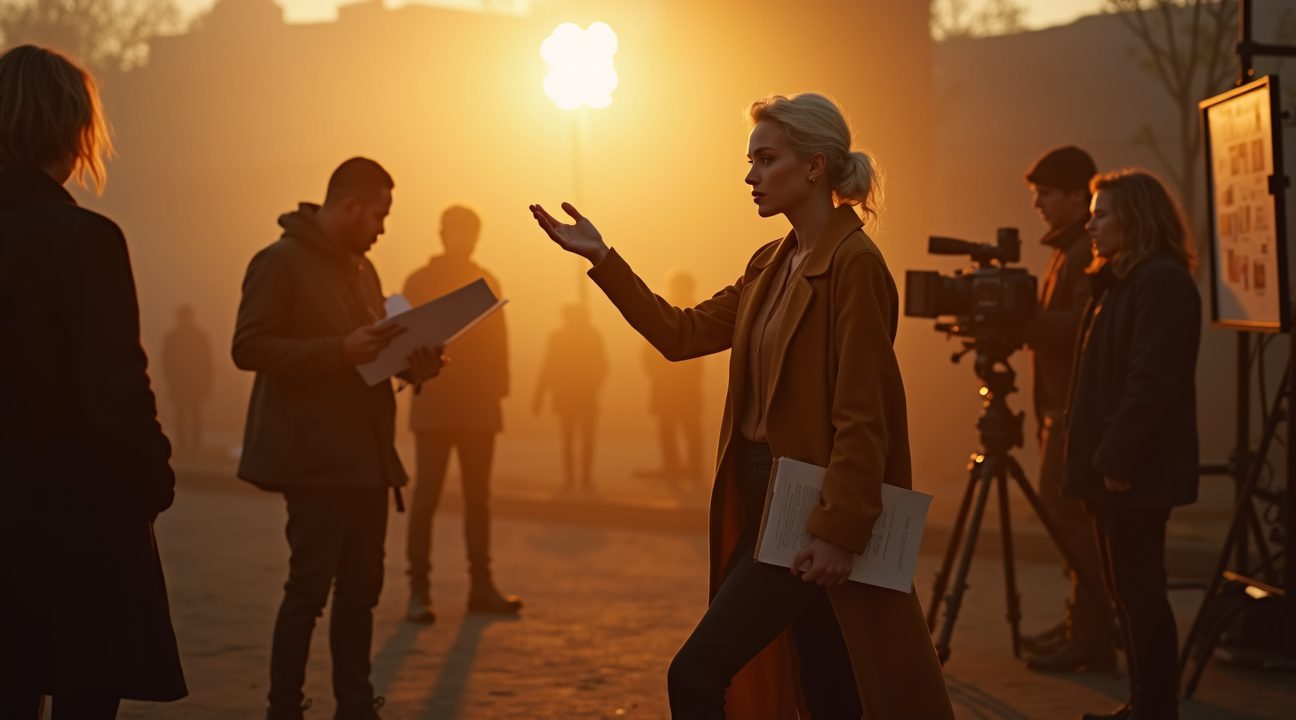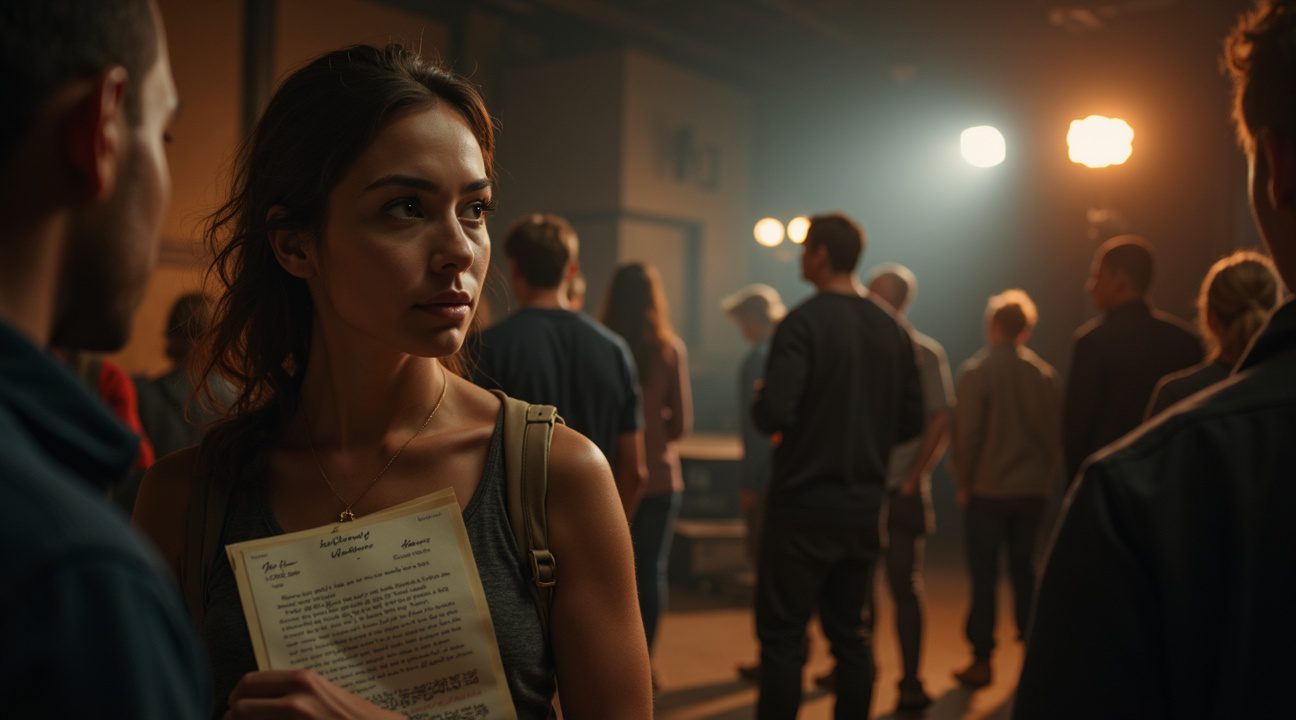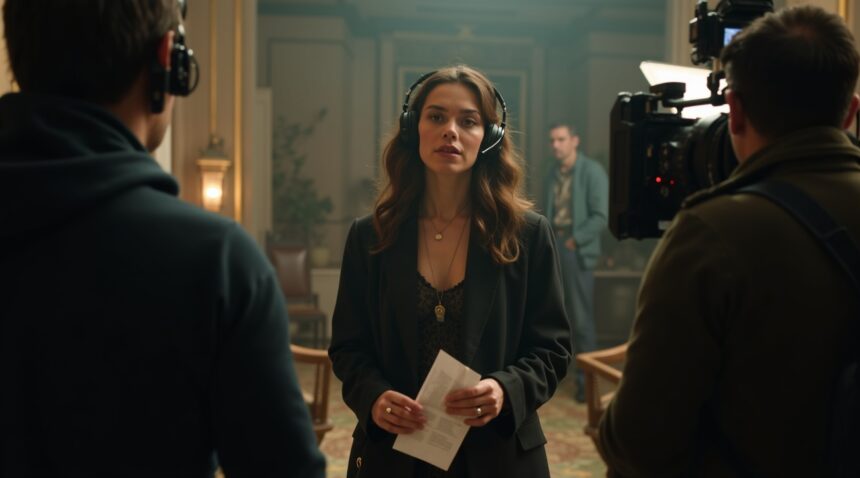Anya Taylor-Joy pursued directing studies primarily due to her self-proclaimed “bossy” nature and innate leadership aptitude, paired with a powerful ambition to exercise full creative control over storytelling, rather than simply interpreting others’ visions.
Key Takeaways
- Taylor-Joy’s self-described “bossy” demeanor and her enjoyment of “telling people what to do” highlight her natural inclination toward leadership—an asset in directing roles.
- Collaborations with renowned directors such as Robert Eggers on The Witch and M. Night Shyamalan on Split offered her a front-row education in the art of directing.
- Her desire to study directing stemmed from a motivation to deepen her collaboration with directors and enhance her contributions as an actor within the filmmaking process.
- Taylor-Joy’s evolution into a multi-hyphenate reflects a broader trend in Hollywood, where actors pursue roles beyond acting to secure creative freedom and longevity in their careers.
- Eschewing traditional film school, she chose to learn informally by treating each set as an immersive classroom, analyzing different directing styles and storytelling techniques firsthand.
To learn more about her work and career, you can follow her journey through IMDb’s profile on Anya Taylor-Joy.
I’m Quite Bossy and Like Telling People What to Do – Taylor-Joy’s Natural Leadership Drive
Anya Taylor-Joy’s candid admission about her personality reveals a key factor behind her directing studies. She has openly acknowledged being “quite bossy” and enjoying “telling people what to do” in various interviews. This self-awareness points to an inherent leadership quality that naturally draws talented performers into directing roles.
Her passion for storytelling extends far beyond simply delivering lines on camera. Taylor-Joy possesses a vision that demands creative control over the entire narrative process. Rather than limiting herself to interpreting someone else’s direction, she craves the opportunity to shape stories from conception to completion. This desire for comprehensive creative authority significantly influenced her decision to pursue formal directing education.
Leadership Qualities That Drive Creative Vision
Several characteristics demonstrate Taylor-Joy’s natural directing instincts:
- Strong opinions about character development and story arcs that extend beyond her own roles
- Collaborative discussions with directors about scene interpretation and narrative choices
- Active participation in creative meetings where she contributes ideas for overall project direction
- Natural tendency to organize and coordinate group activities both on and off set
- Desire to influence how stories are told rather than simply being part of the telling
Taylor-Joy’s leadership drive stems from genuine creative ambition rather than ego. She recognizes that acting provides one avenue for artistic expression, but directing offers complete creative control over the storytelling process. This understanding pushed her to develop skills that would allow her to bring her own stories to life exactly as she envisions them.
The actress’s bossy nature, which she describes without apology, actually serves as an asset in directing. Successful directors must make countless decisions quickly and communicate their vision clearly to large teams. They need confidence to guide actors, collaborate with cinematographers, and ensure every department works cohesively toward the same goal. Taylor-Joy’s natural inclination to take charge positions her well for these responsibilities.
Her directing studies weren’t just about learning technical skills like camera angles or editing techniques. Instead, they focused on developing the leadership capabilities necessary to manage complex productions while maintaining artistic integrity. She understood that her bossy tendencies, when channeled properly through formal training, could become powerful tools for creating compelling cinema that reflects her unique creative vision.

Learning from Masters: How Working with Robert Eggers and M. Night Shyamalan Sparked Her Directing Ambitions
Anya Taylor-Joy’s transition from actress to director didn’t happen overnight. Her time working alongside acclaimed filmmakers provided the foundation for her desire to step behind the camera. The experience of collaborating with directors like Robert Eggers and M. Night Shyamalan gave her unprecedented access to witness masterful storytelling techniques firsthand.
The Witch: A Masterclass in Atmospheric Direction
Working with Robert Eggers on The Witch proved transformative for Taylor-Joy’s understanding of cinematic craft. Eggers’ approach to period authenticity and atmospheric storytelling demonstrated how directors can create immersive worlds that feel both historically accurate and emotionally resonant. She observed his attention to detail in everything from dialogue delivery to the positioning of candles in scenes. This exposure revealed the intricate layers of decision-making that occur behind the camera, sparking her curiosity about the technical aspects of filmmaking that audiences never see.
The collaborative environment on set allowed her to witness how Eggers communicated his vision to different departments. She saw how he worked with cinematographers to achieve specific lighting effects and how he guided actors through complex emotional terrain. These observations planted the seeds for her own directorial aspirations, as she realized the profound impact a director’s vision has on every element of a film’s final form.
Split: Understanding Character-Driven Narratives
Her experience working with M. Night Shyamalan on Split offered different but equally valuable insights into directorial craft. Shyamalan’s reputation for psychological thrillers and character-driven narratives provided Taylor-Joy with exposure to a completely different filmmaking approach. She watched how he crafted tension through pacing and how he used camera angles to enhance psychological elements of the story.
The mentorship she received from these established directors extended beyond formal film education. She gained practical knowledge about:
- Managing film sets
- Working with crews
- Maintaining creative vision throughout production
These real-world experiences showed her the leadership qualities necessary for successful directing and how directors balance artistic vision with practical constraints.
Her observations of both directors’ unique styles helped her understand that directing isn’t just about knowing technical equipment or film theory. She learned about the importance of developing a personal voice and maintaining consistency in creative choices. Watching Eggers’ methodical approach contrasted with Shyamalan’s intuitive style gave her insight into different valid approaches to filmmaking leadership.
The inspiration gained from working with these masters motivated her to pursue formal directing education. She recognized that while on-set experience provided valuable practical knowledge, structured learning would help her develop the comprehensive skill set needed for directing. The combination of theoretical foundation and practical application became her goal as she considered her next career steps.
These collaborative experiences also highlighted the importance of understanding every aspect of film production. Taylor-Joy realized that effective directors need knowledge spanning from script development to post-production editing. Her time with Eggers and Shyamalan showed her how directors communicate with different departments and coordinate complex creative processes.
The influence of these filmmakers extended to her understanding of how directors develop their unique perspectives. She observed how each brought personal experiences and artistic sensibilities to their projects, creating distinctive cinematic voices. This realization helped her understand that successful directing requires both technical competence and personal artistic development.
Working alongside these accomplished directors provided Taylor-Joy with more than just career inspiration. She gained practical insights into the daily realities of directing, from problem-solving on set to maintaining creative vision under pressure. These experiences convinced her that formal directing education would complement her hands-on learning and prepare her for the comprehensive demands of filmmaking leadership.
Building Bridges Between Acting and Directing Through Empathy and Understanding
Anya Taylor-Joy’s transition into directing studies stemmed from her deep appreciation for the collaborative nature of filmmaking. Working closely with various directors throughout her acting career, she gained valuable insights into how effective communication shapes performances and ultimately determines a film’s success. This exposure sparked her curiosity about the creative process from behind the camera.
Her experience on film sets revealed the intricate dance between directors and actors, where trust and mutual understanding become essential elements for producing authentic performances. Taylor-Joy observed how different directors approached the same challenges, noting which communication styles resonated most effectively with performers. These observations planted the seeds for her desire to master both sides of the creative equation.
Understanding the Director’s Vision Through an Actor’s Eyes
Taylor-Joy recognized that studying directing would enhance her ability to interpret and execute a director’s vision more effectively. She understood that actors who grasp the technical aspects of filmmaking can contribute more meaningfully to the creative process. This knowledge allows performers to make informed choices that align with the overall narrative goals rather than working in isolation.
Several key benefits emerged from her pursuit of directing knowledge:
- Enhanced ability to read between the lines of directorial feedback
- Better understanding of how individual scenes fit into the larger story structure
- Improved capacity to suggest creative solutions during filming
- Stronger foundation for meaningful collaboration with cinematographers and editors
- Greater appreciation for the logistical challenges directors face daily
Her approach reflects a growing trend among contemporary actors who view filmmaking as a collaborative art form. Rather than simply taking direction, Taylor-Joy wanted to understand the reasoning behind creative decisions. This deeper comprehension allows her to contribute ideas that support rather than conflict with the director’s intended vision.
The actor-director relationship benefits significantly when both parties understand each other’s perspectives and challenges. Taylor-Joy’s directing studies equipped her with knowledge about pacing, visual storytelling, and performance continuity that proves invaluable during long shooting days. She can anticipate what directors need from her performances and adjust her approach accordingly.
This educational journey also provided insight into the emotional aspects of directing. Understanding how to communicate with actors during vulnerable moments, manage different personality types, and maintain creative momentum throughout production became crucial skills. Taylor-Joy discovered that effective directing requires emotional intelligence as much as technical expertise.
Her commitment to studying directing demonstrates respect for the craft and acknowledges that great filmmaking emerges from mutual understanding between all creative participants. By learning to think like a director, she can better serve the stories she helps bring to life. This perspective shift transforms her from someone who simply delivers lines to a creative partner who actively contributes to the storytelling process.
The knowledge gained through directing studies also influences how Taylor-Joy prepares for roles. She now considers the visual language of scenes, thinks about how her performance choices will edit together, and understands the importance of consistency across multiple takes. These technical considerations enhance rather than restrict her creative freedom as an actress.
Taylor-Joy’s dual perspective creates opportunities for richer artistic collaboration. Directors working with her benefit from an actress who understands the broader creative vision and can offer informed suggestions. This level of engagement often leads to discoveries that enhance the final product beyond what either the director or actor might have achieved independently.
Her journey illustrates how professional growth often requires stepping outside one’s comfort zone to gain new perspectives. By studying directing, Taylor-Joy developed empathy for the challenges directors face while simultaneously becoming a more valuable collaborator. This educational investment continues to pay dividends in her performances and creative relationships throughout the industry.
https://www.youtube.com/watch?v=NKsfoJeGZULYzM
Following Hollywood’s New Multi-Hyphenate Trend for Creative Autonomy
Taylor-Joy’s decision to study directing reflects a broader transformation in Hollywood, where actors increasingly pursue multiple creative roles. This strategic move positions her to join the ranks of successful actor-directors who’ve reshaped contemporary filmmaking.
The entertainment industry has witnessed a surge in performers expanding beyond traditional acting boundaries. Greta Gerwig exemplifies this transition, evolving from acclaimed actress to Oscar-nominated director with films like “Lady Bird” and “Barbie.” Similarly, Olivia Wilde successfully navigated from television and film acting to directing critically praised projects such as “Booksmart” and “Don’t Worry Darling.”
Building a Versatile Skill Set for Career Longevity
Studying directing provides Taylor-Joy with essential tools that enhance her understanding of storytelling from multiple perspectives. This expanded skill set includes:
- Script analysis and development capabilities
- Understanding of cinematic language and visual composition
- Leadership and crew management experience
- Budget and production planning knowledge
- Post-production oversight and editing insight
These competencies create career flexibility that extends far beyond traditional acting opportunities. Directors often enjoy longer careers than actors, as age becomes less restrictive when working behind the camera. Recording industry performers have similarly diversified their talents to maintain relevance across changing market demands.
Creative autonomy represents perhaps the most compelling advantage of directorial training. When actors understand the director’s role, they gain greater control over their artistic vision and can shape projects according to their creative instincts. This independence allows for more meaningful storytelling choices and reduces dependence on others’ interpretations of their artistic goals.
Industry trends clearly favor multi-hyphenate artists who can contribute across various production phases. Studios increasingly value individuals who can wear multiple hats, especially when budgets tighten and efficient resource allocation becomes critical. Taylor-Joy’s directorial studies position her to capitalize on these shifting industry dynamics.
The actor-director pathway also opens doors to producing opportunities, creating additional revenue streams and creative influence. Streaming platforms particularly value creators who can deliver content across multiple formats and genres.
Taylor-Joy’s investment in directorial education demonstrates forward-thinking career planning. By developing these additional capabilities now, she’s building a foundation for sustained creative influence throughout her career. This approach mirrors successful transitions by actors like Clint Eastwood and Ron Howard, who leveraged their performance experience to become respected directors.
The combination of acting experience and directorial training creates a unique advantage in communicating with performers and understanding on-screen dynamics. This dual perspective often results in more nuanced performances from cast members and more cohesive final products.
Shaping Complex Stories from The Queen’s Gambit to Future Projects
Anya Taylor-Joy’s decision to study directing stems from her deep commitment to impactful storytelling and her desire to craft narratives that resonate with audiences on multiple levels. Her acclaimed performances in projects like The Queen’s Gambit, The Witch, and Split demonstrate her natural understanding of complex characters, but directing education allows her to expand this expertise into complete story construction.
Building on Performance Excellence
Taylor-Joy’s nuanced performances have consistently showcased her ability to inhabit characters with psychological depth and emotional complexity. Beth Harmon in The Queen’s Gambit exemplified this skill through her portrayal of a chess prodigy struggling with addiction and isolation. Rather than remaining content with delivering powerful performances, Taylor-Joy recognized that studying directing would give her the tools to shape these types of characters from conception through final cut.
The actress has spoken about her commitment to participating in films with strong, resonant narratives that challenge both performers and audiences. This dedication drives her educational pursuits in direction, where she can influence every aspect of storytelling rather than just her individual role. Much like how anime adaptations require careful attention to character development, Taylor-Joy understands that directing education helps her grasp the full scope of bringing complex personalities to life on screen.
Expanding Creative Control and Impact
Studying directing represents Taylor-Joy’s evolution from interpreter to creator of complex stories. Her experience working with acclaimed directors has shown her how narrative choices affect character development and audience engagement. She’s expressed interest in creating films that feature the same level of psychological sophistication found in her most celebrated roles.
This educational step positions Taylor-Joy to develop projects where she can ensure creative impact from start to finish. Her directing studies focus on techniques for managing ensemble casts, developing character arcs, and maintaining narrative consistency across complex storylines. The skills she’s acquiring will enable her to bring the same attention to detail she applies to her performances into broader creative leadership roles.
Future projects may benefit from her unique perspective as both performer and director, allowing her to guide other actors through the type of character development work that has defined her career. Taylor-Joy’s commitment to studying direction demonstrates her understanding that truly impactful storytelling requires mastery of multiple creative disciplines, not just exceptional acting ability.

From School Drama to Self-Education: Her Unconventional Path to Directing Knowledge
Taylor-Joy’s journey into directing began well before she ever considered it as a serious pursuit. During her formative years, she immersed herself in drama and dance at several prestigious institutions, including Northlands School, Hill House, and Queen’s Gate. These early experiences with school productions provided her first taste of storytelling from multiple perspectives, allowing her to observe how directors shaped performances and guided narratives.
Her bold decision to leave school at 16 to pursue acting full-time marked a turning point that would ultimately benefit her directing aspirations. While many actors follow traditional paths or later attend formal film school, Taylor-Joy chose a different route entirely. She recognized that her career in front of the camera could serve as an unconventional classroom for learning the craft behind it.
Building Director’s Eye Through On-Set Observation
Throughout her acting career, Taylor-Joy transformed each film set into a learning laboratory. She carefully studied how different directors approached their craft, noting their communication styles, creative decisions, and problem-solving techniques. This practical experience became invaluable as she worked with established filmmakers who each brought unique perspectives to their projects.
Her self-education process involved several key elements that distinguished her approach from traditional film school graduates:
- Actively engaging with directors during filming to understand their creative process and decision-making rationale
- Observing how different departments collaborate under a director’s vision and leadership
- Studying scripts not just for her character but for overall narrative structure and pacing
- Paying attention to technical aspects like camera placement, lighting choices, and editing considerations
- Building relationships with crew members to understand their roles in bringing a director’s vision to life
This hands-on approach allowed Taylor-Joy to develop a comprehensive understanding of filmmaking that goes far beyond what most actors typically acquire. Her experiences on diverse sets exposed her to various genres, budgets, and production styles, creating a rich foundation for her own directing ambitions.
The actress’s natural curiosity and willingness to ask questions set her apart from peers who might focus solely on their performances. Instead of limiting herself to one aspect of filmmaking, she embraced the opportunity to understand how all elements work together under a director’s guidance. This holistic perspective became crucial as she began contemplating her own projects behind the camera.
Her unconventional path demonstrates that formal education isn’t the only route to developing directing skills. Taylor-Joy’s combination of early drama experience and extensive on-set observation created a unique educational journey that prepared her for the challenges of directing in ways that traditional film school might not have achieved.
Each collaboration added new layers to her understanding of the director’s role, from managing creative tensions to making quick decisions under pressure. She learned to read room dynamics, understand when to push for specific choices, and recognize how directors maintain their vision while remaining open to input from cast and crew.
This self-directed education approach reflected Taylor-Joy’s independent spirit and willingness to forge her own path in the entertainment industry. Rather than following conventional wisdom about how to transition from acting to directing, she created her own curriculum based on practical experience and genuine curiosity about the craft.
Her method proved particularly effective because it allowed her to learn from multiple mentors across different projects, rather than being limited to one institutional perspective. This diverse exposure helped her develop a flexible directing style that draws from various approaches and techniques she observed throughout her acting career.
The foundation she built through school drama and continued through professional self-education demonstrates that passion and dedication can create alternative pathways to expertise. Taylor-Joy’s journey from student productions to serious directing consideration shows how early creative experiences can evolve into professional ambitions when nurtured with intentional learning and practical application.

Sources:
IMDB, “Anya Taylor-Joy – Biography”
IMDB, “Anya Taylor-Joy”
Crash Magazine, “A Meeting with Anya Taylor-Joy”
Britannica, “Anya Taylor-Joy”
Kiddle, “Anya Taylor-Joy Facts for Kids”
Wikipedia, “Anya Taylor-Joy”
Her Campus, “Anya Taylor-Joy: How Did She Become Hollywood’s Favorite Star?”


